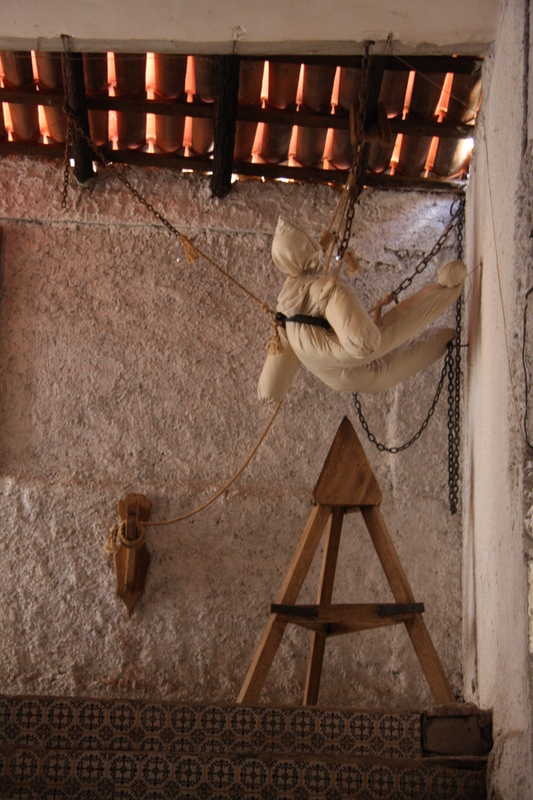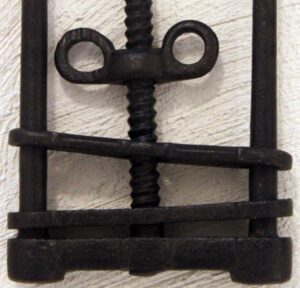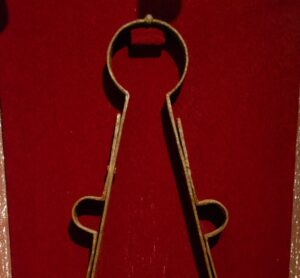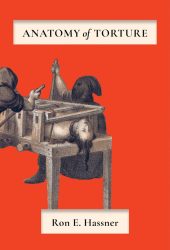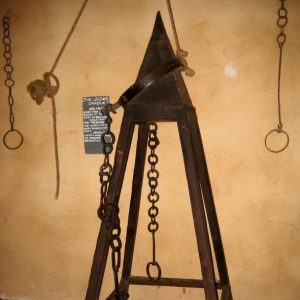
The Judas Cradle, also known as the Judas Chair, was a torture device used during the medieval period. It consisted of a pyramid-shaped seat typically made of wood or metal, with a sharp pointed tip at the apex.
The victim would be positioned above the point of the pyramid, either suspended by ropes or lowered onto the device, with their weight gradually forcing the sharp tip into their body.
The Judas Cradle in Medieval Times
The intended purpose of the Judas Cradle was to inflict excruciating pain and suffering on the victim. As the sharp tip penetrated the victim’s anus or vagina, or occasionally other parts of the body, it would cause severe internal injuries and often lead to infection or even death.
The Judas Cradle was typically used as a means of punishment or coercion, with the threat of being subjected to the device sometimes being enough to extract confessions or compliance from prisoners. It was particularly associated with the Spanish Inquisition and other instances of religious persecution during the Middle Ages.
Was the Judas Cradle Real?
The historical authenticity of the Judas Cradle, also known as the Judas Chair, is supported by various historical records and accounts from the medieval period. While there might be some variation in its design and usage across different regions and time periods, there is ample evidence to suggest that it was indeed a real torture device employed during the Middle Ages.
References to the Judas Cradle can be found in medieval texts, artworks, and historical documents. Additionally, archaeological findings, such as depictions of the device in illustrations or references to it in legal records, further confirm its existence and use.
While the specifics of the Judas Cradle’s design and how frequently it was employed may vary, its overall function as a tool of torture remains consistent in historical accounts.
Examples of Real Judas Cradles:
The Spanish Chair or Iron Chair
This variation of the Judas Cradle was reportedly used in Spain and other parts of Europe during the medieval period. It consisted of a chair with a pyramid-shaped seat and a sharp pointed tip. The victim would be forced to sit on the pointed tip, with their weight pressing down, causing severe pain and potentially causing injuries to the genitals or anus.
Examples of Real Judas Cradles:
The Chair of Nails
This variation of the Judas Cradle featured a chair with a seat and backrest lined with sharp nails or spikes. The victim would be forced to sit or lie on the chair, with the nails piercing their flesh, causing agonizing pain and potentially leading to infection or death.
Examples of Real Judas Cradles:
The Heretic's Fork
While not a traditional Judas Cradle, the Heretic’s Fork was a similar device used for inflicting pain and punishment. It consisted of a metal fork with two prongs, each prong resting against the victim’s neck and chin. The victim would be forced to stand or kneel with their head tilted forward, causing the prongs to dig into their flesh and throat, making it difficult to speak or swallow.

